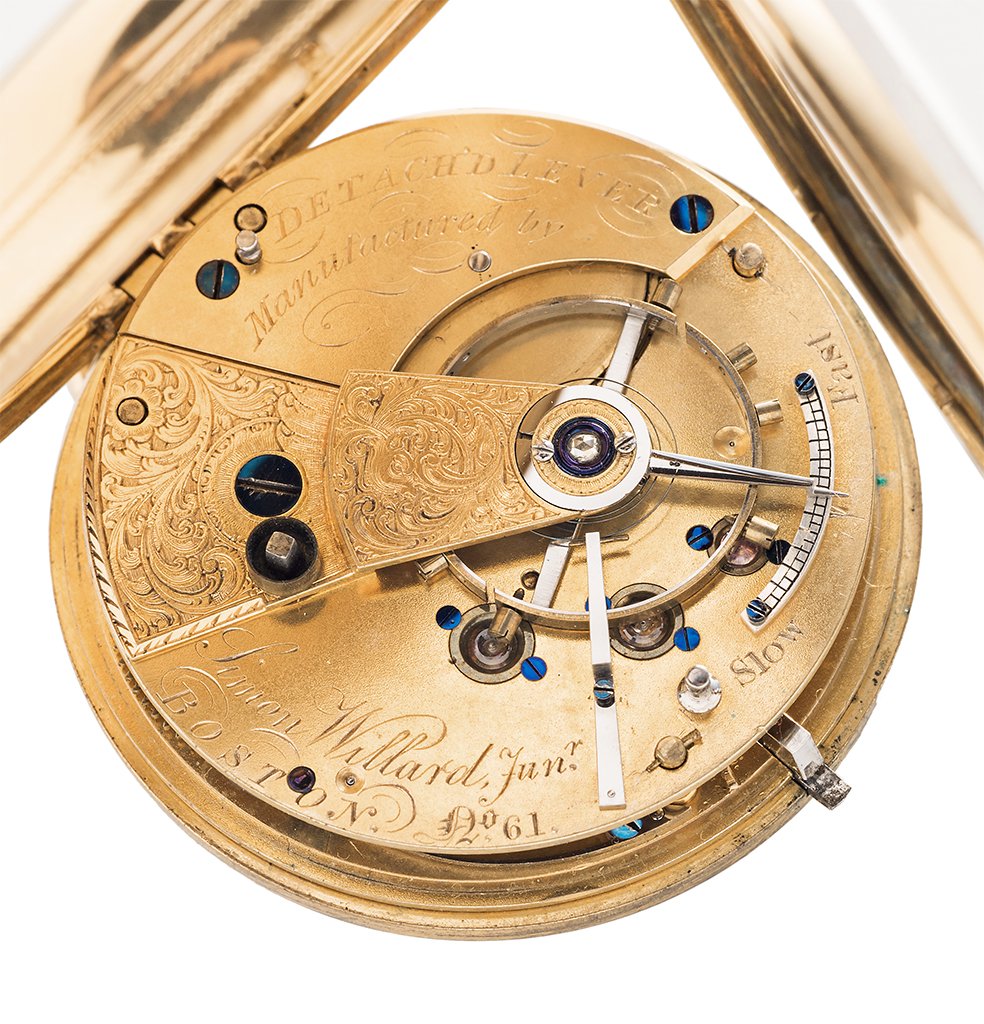Use the form on the right to contact us.
You can edit the text in this area, and change where the contact form on the right submits to, by entering edit mode using the modes on the bottom right.
11 Willard Street
North Grafton MA 01536
5088393500
The Willard House & Clock Museum is a historic place with festive roots, right in the heart of Massachusetts. Come visit us for a guided tour of our museum.

Simon Willard’s eyeglasses c.1800. These are most likely magnifiers to correct presbyopia or farsighted vision as a result of age. These came from the estate of Simon’s great great granddaughter, Mary (Monks) Cowell.
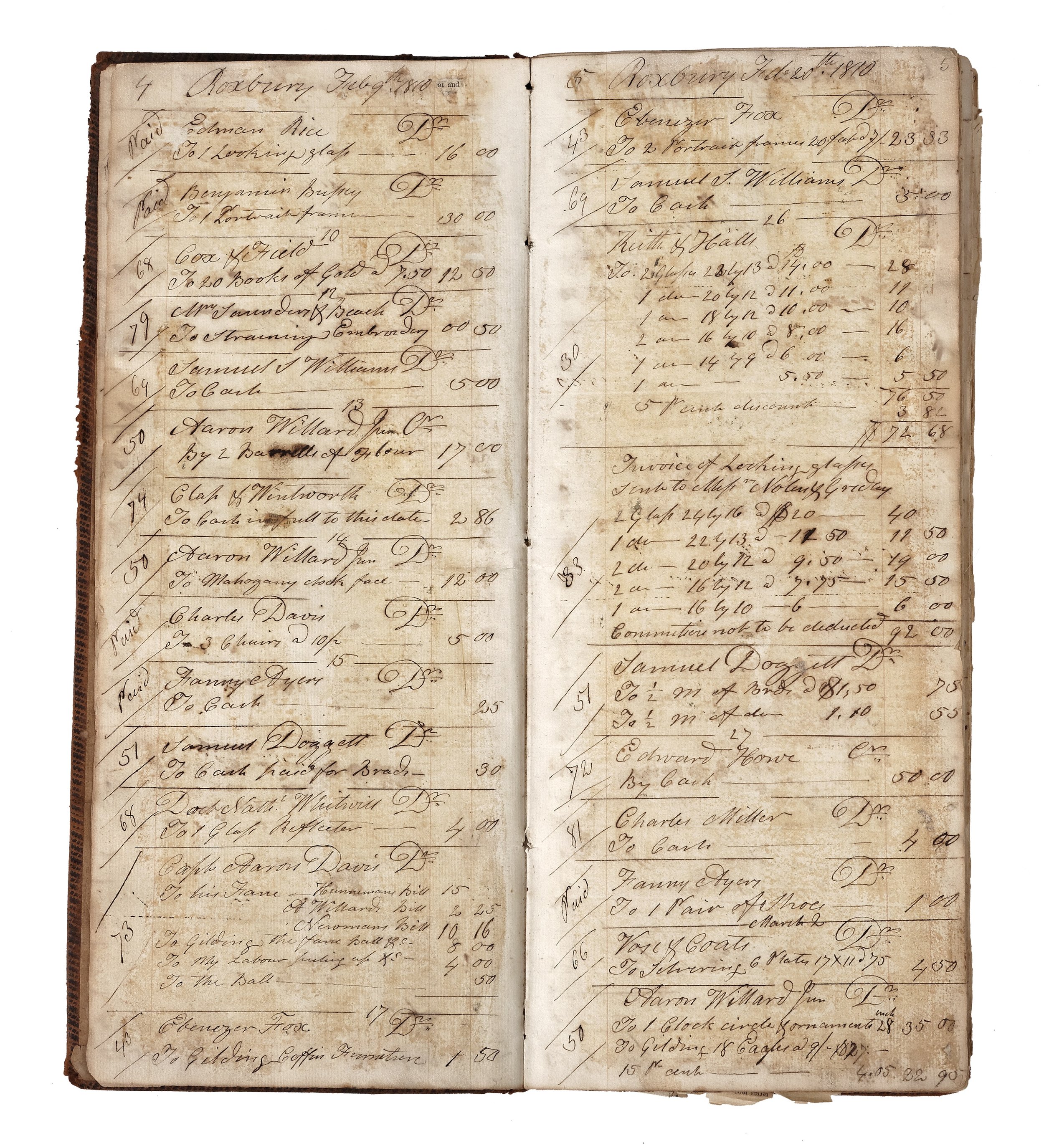
Two pages from 1810-12 John Doggett (1780-1857) Daybook. Daybooks were financial documents that recorded the debits and credits that occurred in a business from day to day. Documents like this and bills of sale are very important when researching objects and piecing together an artists life. It is through the daybooks of other artisans who worked with the Willards that we have insights into their business.
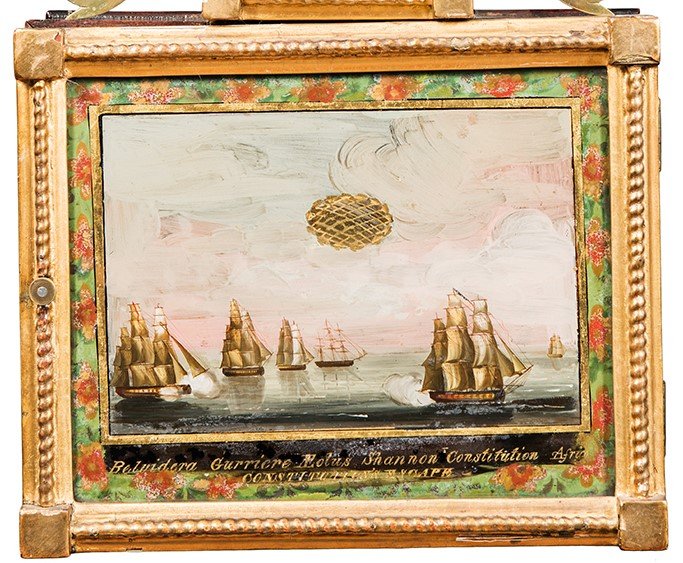
Glass from a c.1815 Aaron Willard Jr. (1783-1864) Willard Patent Timepiece. Early patent timepieces glasses had a more geometric/architectural look, but began to become more intricate and scenic. Here we have a wonderful example depicting the then recent War of 1812. This exact scenario likely never happened, but represents two major occurrences during the war.

Spencer Nolen (1784-1849) was a Boston area ornamental artist. In 1808 he married Aaron Willard’s daughter Nancy; they likely met through his work with her father. Willard House has an example of both his dial painting (above) and reverse glass painting (below).
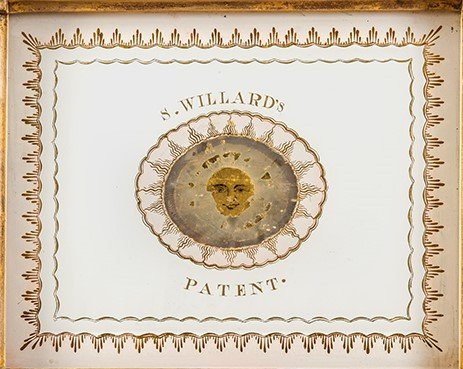
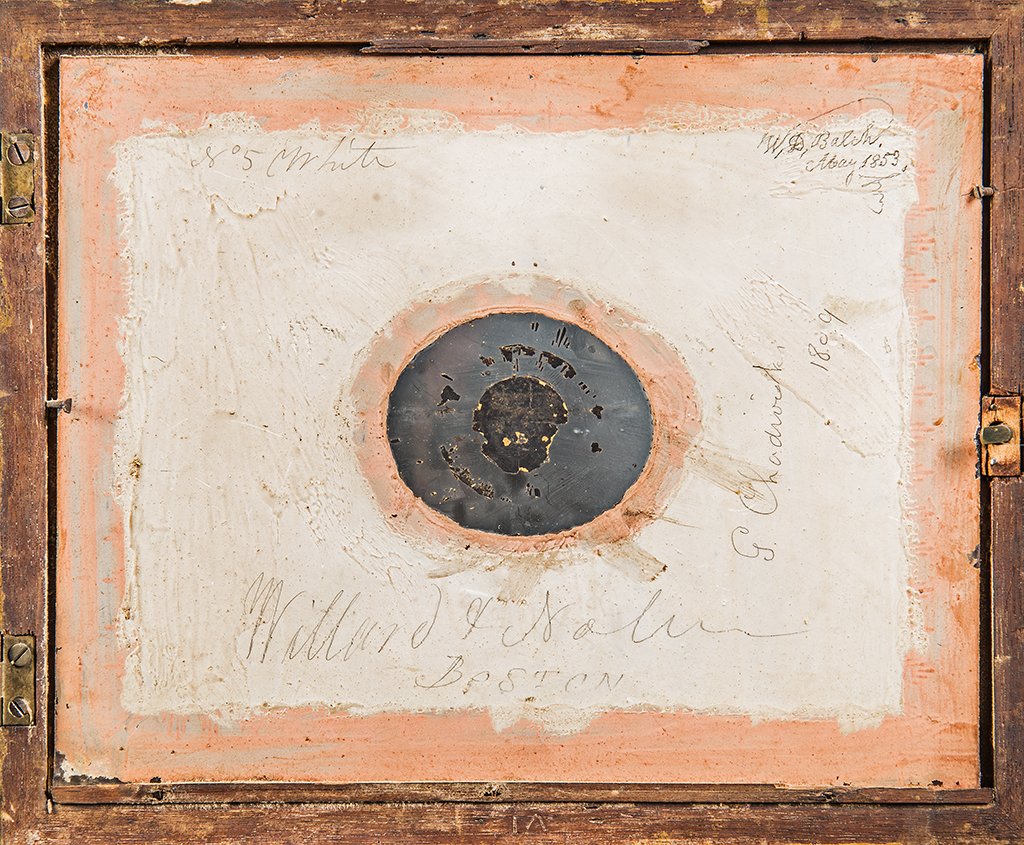
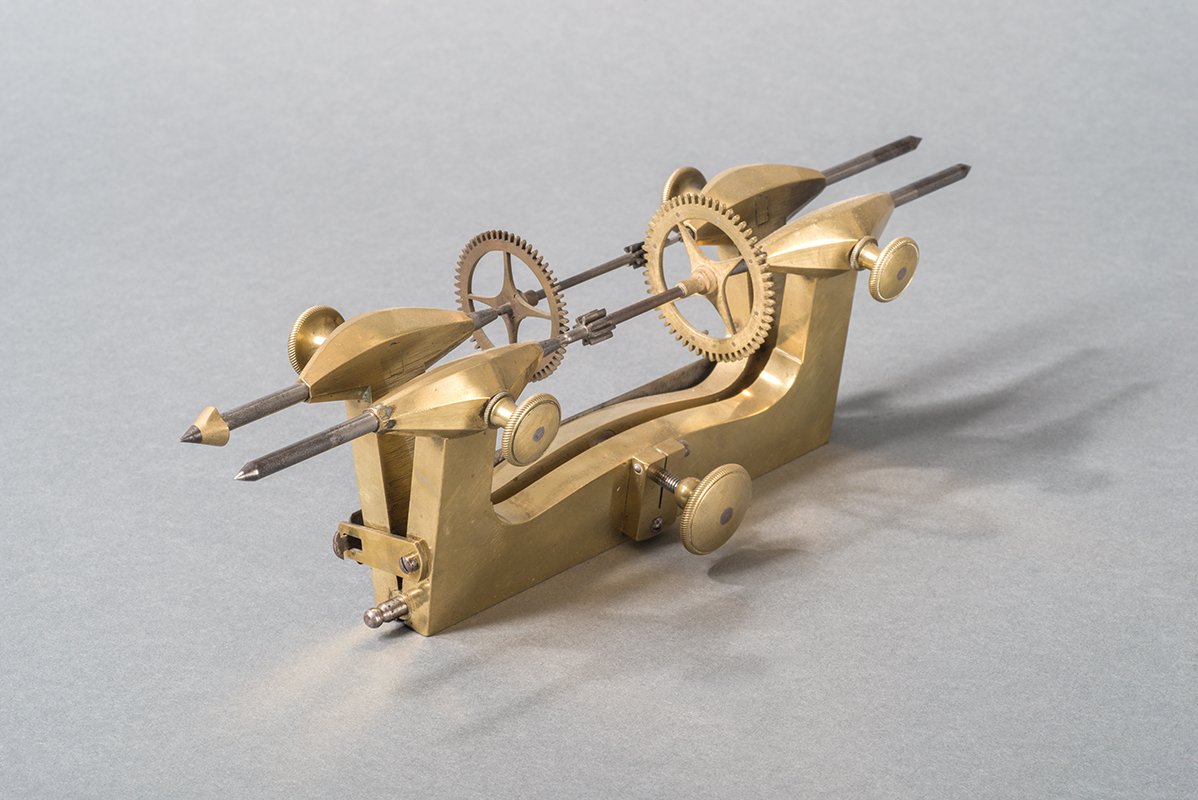
Brass and Steel Depthing Tool, with steel runners and hatched thumbscrew tighteners, the balance is supported by one of its own pivots, while the one being worked on is resting on one of the grooved spindles.The adjustable u-shaped base supports the runners which are aligned to hold the wheels and arbors, all tightened with thumbscrews.
Brass, signed "E.Taber $11.00 May 4 1839" may have been bought from Simon Willard.
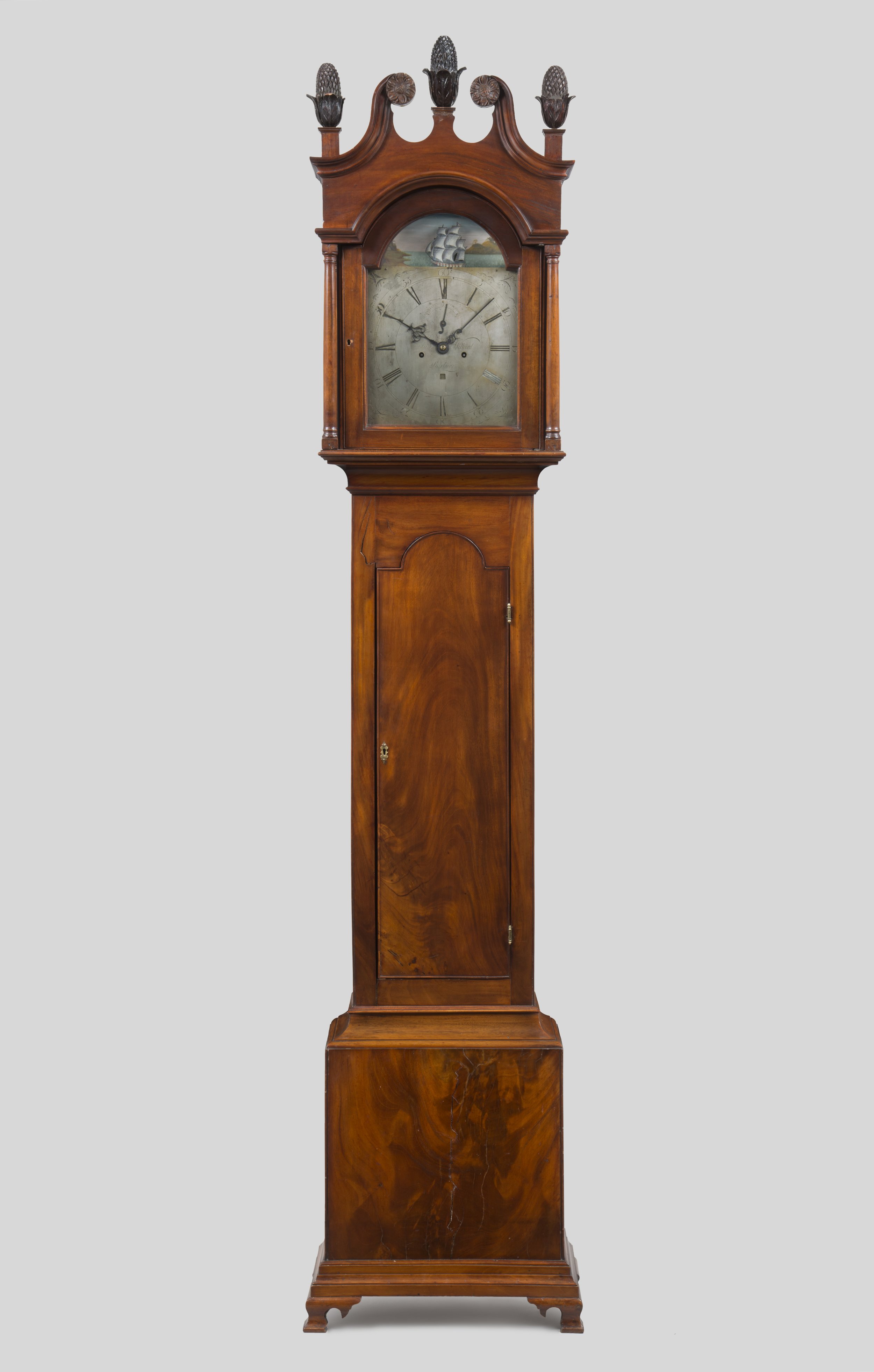
Aaron Willard (1757-1844), Roxbury, Massachusetts, Eight-day rocking ship clock (c.1790)
The clock arch displays a ship at harbor rocking in the waves. This effect is achieved by extending up from the pendulum and attaching a ship painted on tin. The strike weight contains a door to adjust the weight or hide valuables.

Patent Alarm Timepiece by Simon Willard (1753-1848) made c.1824 for Mr. George Tilly Rice. This piece descended through his family until 2014 when it was donated to Willard House by his great-great granddaughter.
George Tilly Rice (1796-1867) was a Worcester banker, sponsor of the Blackstone Canal, member of the Fire Society, and founder of the Nashua & Worcester Railroad. This piece was likely commemorative of either his work with the canal or the Fire Society.
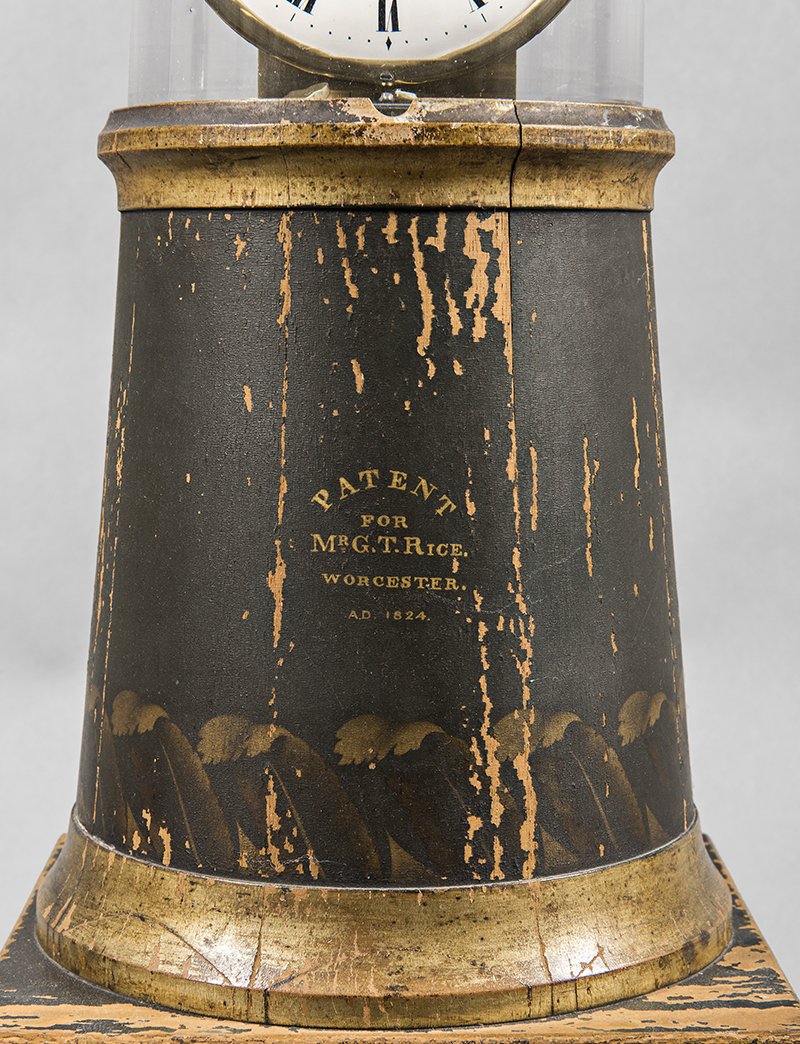

Minott was a pioneering painter of tall clock dials working primarily for the Roxbury/Boston, MA Willard clockmakers in the late 18th century. Dozens of his signed tall clock dials have been identified, documented, and are illustrated in this new work.
The author traces Minott’s relatively melancholy career that brought him great financial success followed by economic and personal failure at the time of the near collapse of the New England economy during the War of 1812.
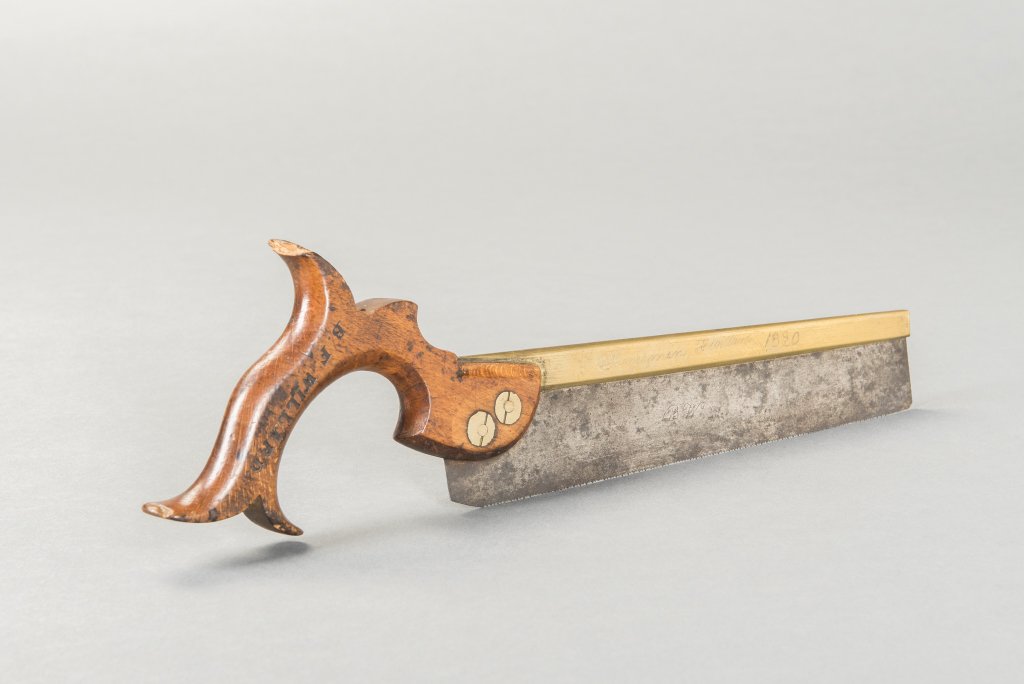
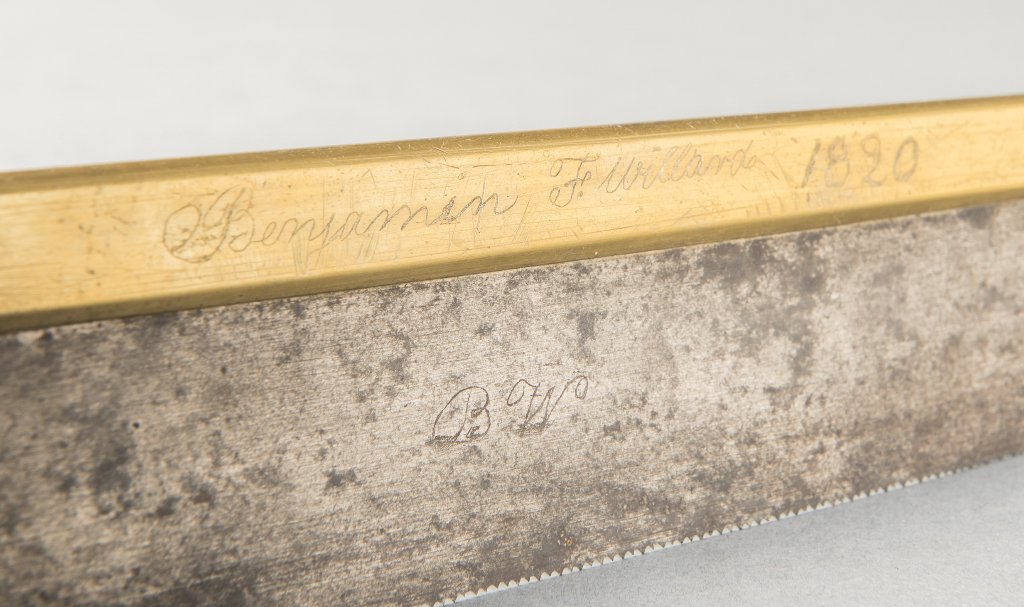
Backsaw owned by Benjamin F. Willard (1803-1847), son of Simon Willard (1753-1848). Metal body with golden color top rail and carved handle. Marks include Benjamin's name and the year 1820.
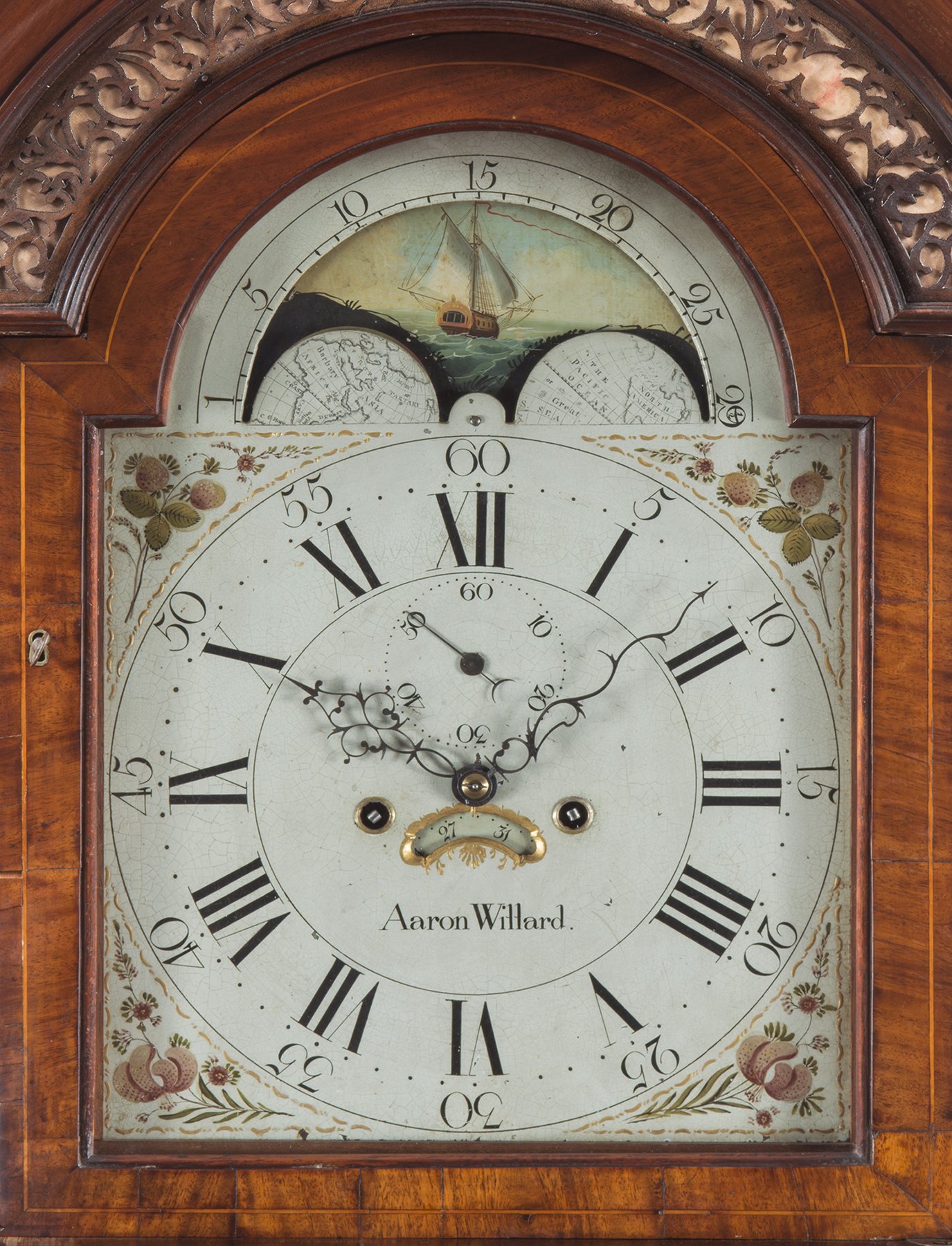
Boston painted eight-day clock dial, circa 1795 with distinctive printed “Aaron Willard”
signature, floral decorated corners with raised gilt gesso borders, transfer printed “half map”
hemispheres, and moon’s age dial in the arch showing the new moon position. This dial can be
attributed to Boston ornamental artist John Minott (1772-1826).
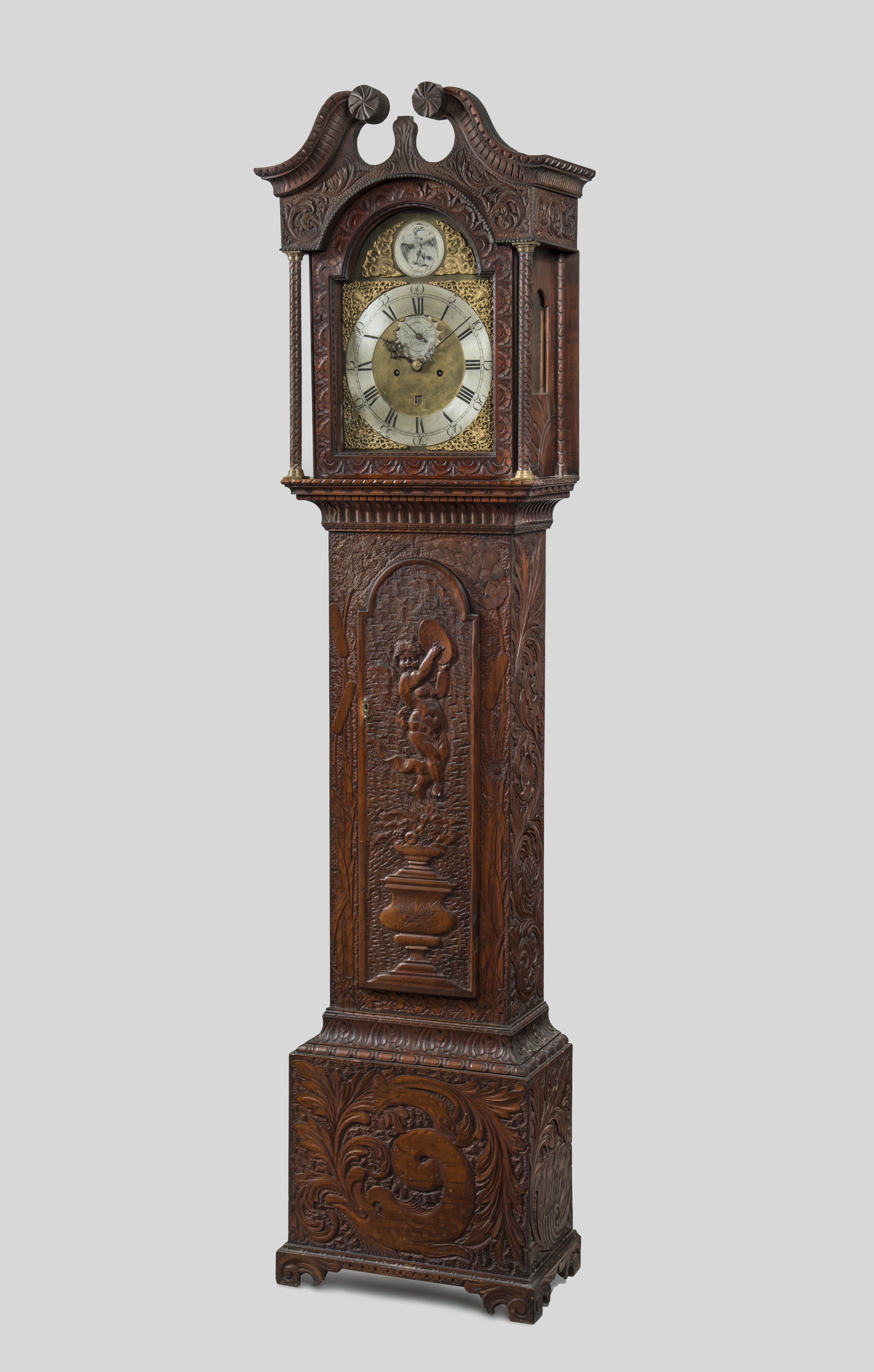
Benjamin Willard (1743-1803), Grafton, Massachusetts, Eight-day Clock, c. 1770
With later case made by David Young, Hopkington, NH, c. 1800
Carving done late in the 19th century
Owned by the Bill Family of Paxton, Massachusetts in the 19th century. It accompanied one member of the family in dormitory living first at Worcester Academy, then to Amherst College and finally to Harvard Law School. Despite its altered condition, this clock deserves a place in this museum for the interesting family history it carries with it through the centuries. It is no doubt the most ‘educated’ clock in the collection!
Aaron Willard (1757-1844) Eight-day clock
Stephen Badlam (1751–1815) constructed this case for Aaron Willard (1757–1844). Primary wood, mahogany.
The painted lunar calendar ("moon-phase" dial) on the dial features a seascape and a landscape (shown in the detail to the right).
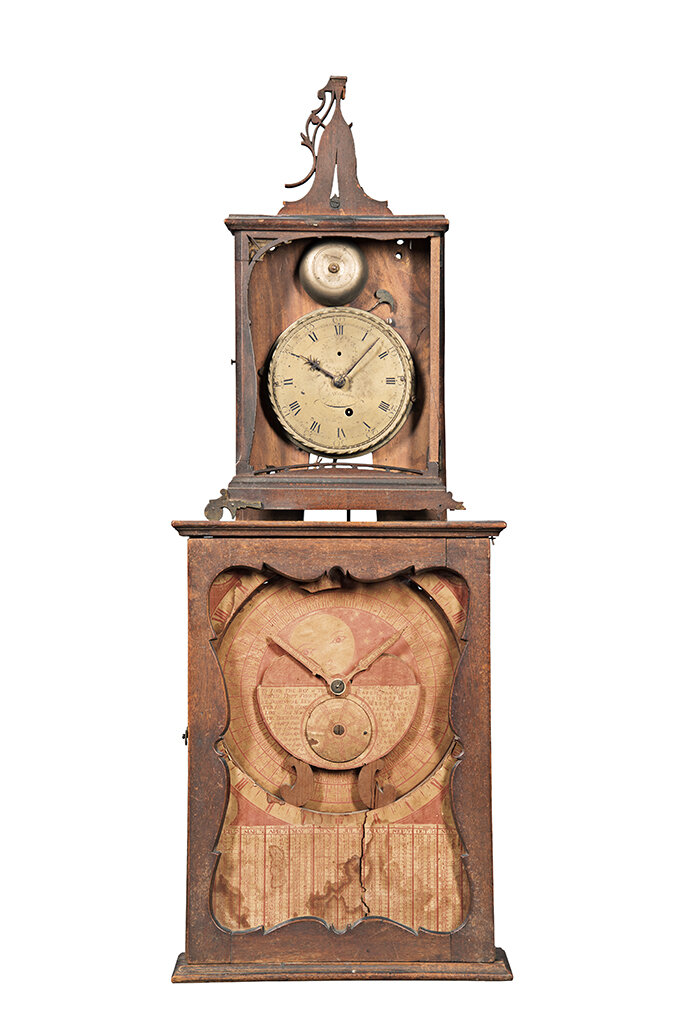
Simon Willard (1753-1848) 30-hour Timepiece with Passing Strike and Manual Almanac, Roxbury, Massachusetts, 1781
Mahogany, white pine, brass and steel.
ht. 29 in.
Loaned by the Dedham Historical Society and Museum

One of only two known examples with printed tables and dials sold to Willard by the patriot, Paul Revere (1735-1818) as noted in numerous transactions in Revere’s daybook in 1781.

The paper mounted on pine backing attempts to display, day of the week, day of the month, rise and set of the sun and moon, high and low tides, the equation of time, local time in Boston, London, Jerusalem and China, and the Dominical Letter. On this example, it is printed in “vermillion” which was at an added cost.

Eight-day timepiece in the Willard House collection by Aaron Willard (1757-1844), Boston, c. 1835
The mahogany case is painted white, a color called “stone”, and has been incorrectly used as evidence that “white painted” clocks were “bride’s” clocks and given to brides on their wedding day. This nomenclature started in the literature about 100 years ago and continues incorrectly to this day by dealers, collectors and museums. White was one of several colors painted on Willard shelf and wall clocks in addition to bottle green and red. Although rare, white patent timepieces, shelf clocks and furniture forms are known that date well before the “white wedding” of Queen Victoria and Prince Albert in 1840 which began the popularity of brides wearing white at their weddings.

Lower reverse-painted tablet depicting “Mary had a Little Lamb”
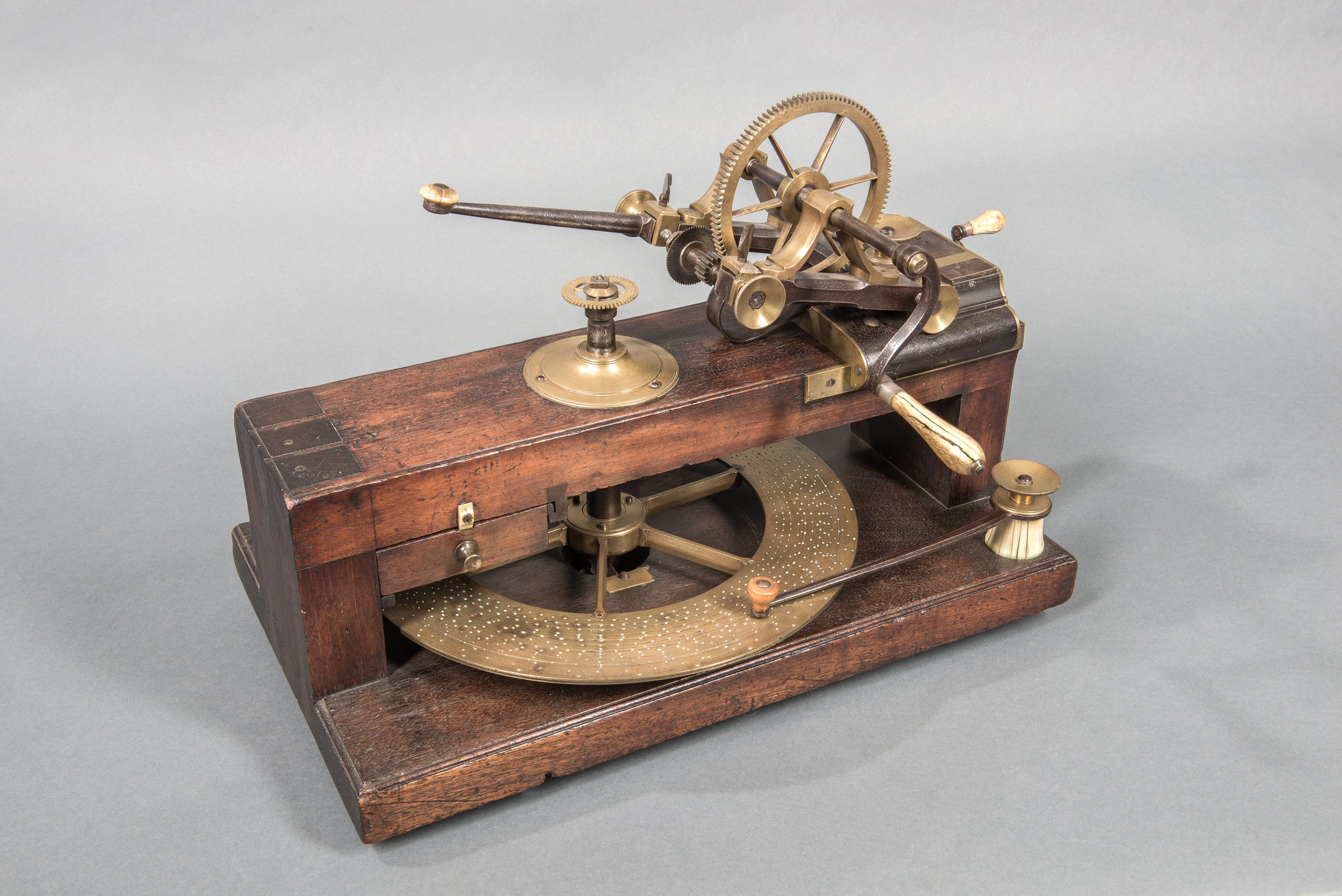
New England, mahogany, brass and steel “Wheel-cutting Engine”, circa 1780. This type of “Engine” is well documented in use by clockmaker Daniel Burnap (1759-1838) in Connecticut, and no doubt is the type used by Simon Willard in his Grafton workshop by 1770. The most complicated machine in an 18th century clockmaker’s shop was used to precisely cut the teeth of varying numbers for the various wheels (gears) used in a mechanical clock. First, the number of teeth to be cut was set on the brass index plate below. The slitting saw was then was brought in contact with the brass blank and rotated by hand cutting a slot through the blank. The brass index plate was then rotated for the next tooth, rotating the blank, and the next slot was cut. The basic principles of the process of cutting teeth for a wheel or gear remain to this day, minus the elbow grease!

Detail of the brass index plate showing the rows of concentric numbered index holes for the various numbers of teeth to be cut for the wheels in an 18th century clock. As a tooth slot was cut, the index arm was raised, the brass plate rotated to the next position, thus rotating the blank to be cut a precise distance.

"S Willard's Patent" in 1802 was Simon Willard's (1753-1848) new design of a wall-hanging timepiece. The front of the clock was decorated with the latest French design called "Verre églomisé" or glass gilded and painted on the reverse side. The gold or silver leaf was adhered using a gelatin adhesive, then burnished or etched to provide an almost magical effect when the polished brass pendulum was set in motion behind a mythical depiction of the sun. The gilded and carved rope-molding frame and the gilded pedestal complete the design.
